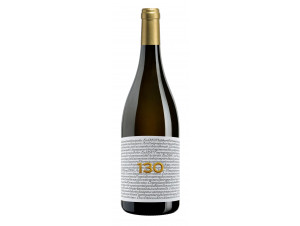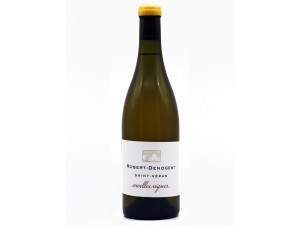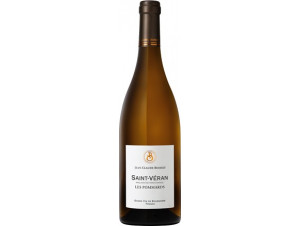You have no items in your shopping cart.
Wine Saint-Véran
-
Top Selling-28%
-
Top Selling
-
Top Selling
- -17%
- -28%
- -17%
- -28%
The AOC Saint-Véran takes its name from a 6th century bishop
The appellation takes its name from the Bishop "Saint-Véran" who at the end of the 6th century sat on the Council of Macon. This Bishop gave his name to the village of Saint-Véran, which later became "Saint-Vérand des Vignes" then "Saint-Vérand". The presence of the vine in the Mâconnais is attested since the 1st century. Nevertheless, the growing of vines and the marketing of wine took on a real importance in the region from the Middle Ages onwards under the impetus of the monastic orders and in particular under the influence of the Abbey of Cluny. At that time, and until the 19th century, the vineyard was mainly planted with Gamay and therefore produced red wines.
What are the characteristics of the Saint-Véran vineyard?
The Saint-Véran Appellation d'Origine Contrôlée is located in the department of Saône-et-Loire, and enjoys a prime location. Indeed, the appellation is spread over two islets separated by a part of the neighbouring appellation of Pouilly-Fuissé. The Saint-Véran vineyard covers an area of about 680 hectares on the hillside at altitudes ranging from 200 to 450 metres. It benefits from three orientations, south, west and east. This hilly landscape is dominated by three high points: the Roche de Solutré, the Roche de Vergisson and the Mont Pouilly.
The vineyard is planted on soils with varied substrates where we find grey marls of the Lias, marly limestones and limestones with entroques often rich in flint. A temperate, oceanic climate with southern tendencies gives it a formidable quality of cultivation, which contributes to offer a prestigious wine. Protected from the humid oceanic influences by the Charollais mountains, the area also benefits from a rainfall that does not exceed 800 millimetres, is regular and well distributed over the year.
Saint-Véran is an appellation entirely dedicated to white wine
The Saint-Véran appellation produces exclusively white wines from the Chardonnay grape. Nevertheless, the variety of soils and exposures offers wines of great diversity depending on the terroir. Moreover, Saint-Véran does not escape the particularity of Burgundy parcels and declares more than 40 different climates. It is possible to identify three main wine profiles:
The "generous" wines, characterised by a beautiful roundness in the mouth, often associated with the climats "Les Cras" and "Les Monts". The "mineral" wines, characterised by a fine texture with hints of gunflint and flint, often associated with the climats "La Mûre" and "En faux". The "balanced" wines, which offer a beautiful harmony between roundness and mineral finesse. They are generally associated with the climats "Les Crêches" and "Les Chailloux".
More generically, the wines of the Saint-Véran appellation have a light yellow, pale gold colour with green highlights. The nose reveals a bouquet releasing fruity aromas such as peach or pear, but also scents of fern, acacia, or even honeysuckle. On the palate, Saint-Véran is a dry and round wine often supported by a mineral streak. After a few years of cellaring, the wine fleshes out and gains in depth. It is then easy to distinguish a certain sweetness, nostalgically recalling the childhood sweets of almond, hazelnut, cinnamon, even honey. Saint-Véran is a wine that should be drunk at a temperature of 9 to 11°C in its youth, but will benefit from being served between 11 and 13°C after a few years of ageing.
What dish to drink a Saint-Véran with?
Saint-Véran enjoys a prime geographical location, as the appellation lies at the crossroads of three major gastronomic regions: Burgundy, Beaujolais and Bresse. The combination of local culinary specialities is always a good approach to sublimate a wine.
It's clean, crisp tone allows it to blend voluptuously with the most sophisticated dishes. Choose a fish with unctuous flesh, which in contact with the mineral touch of the Saint-Véran wine, will reveal all its quality. Any other marine preparation (seafood casseroles, risottos...) is also perfectly adapted to the tasting of Saint-Véran wines. White meats and in particular specialities such as Bresse chicken or veal blanquette promise an ideal marriage.
Cheeses are not to be outdone: it is not uncommon to accompany a bottle of Saint-Véran with a goat's cheese, a Comté, or a Bleu de Bresse.
2 domains to discover in the Saint-Véran vineyard
The Maison Philibert Ferraud et Fils:
A true local institution, this family-run winery was created in 1882 by Philibert Ferraud. It is therefore 138 years of history and know-how that are passed on and shared with the 5th generation of Ferraud at the head of the vineyard today.Domaine de la Croix Senaillet :
Located in the heart of the Mâconnais in the village of Davayé, the Domaine de la Croix Senaillet was created by Maurice Martin in 1969. His two sons are now at the helm of the estate. The 25 hectares of vineyards, divided into a mosaic of more than 60 parcels, are managed in organic farming.Burgundy Rosé
Burgundy-Côte-Saint-Jacques
Burgundy-Côtes-du-Couchois
Burgundy-Coulanges-la-Vineuse
Burgundy-Épineuil
Burgundy-Grand-Ordinaire
Burgundy-Hautes-Côtes-de-Beaune
Burgundy-Hautes-Côtes-de-Nuits
Burgundy-Vézelay
Crème de fruits
Criots-Bâtard-Montrachet
La Tache
Liqueur
Mâcon Supérieur
Mâcon-Bray
Mâcon-Chaintré
Mâcon-Cruzille
Mâcon-Vergisson
Mazoyères-Chambertin
Pouilly-Loché
Romanée-Saint-Vivant
Ruchottes-Chambertin
Vin de Pays de Sainte-Marie-la-Blanche
Vin de Pays des Coteaux de l'Auxois































 TWIL - Achat de Vin
TWIL - Achat de Vin


